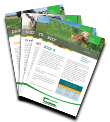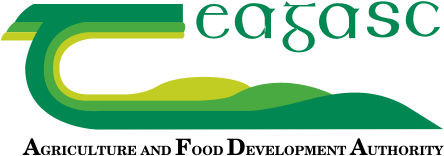
Dairy Newsletter – October 2023
09 October 2023
Type Newsletter
Type Newsletter
Download Publication (PDF)
In this month’s edition:
- Top five tips for October
- Arrange a milk recording for your herd at the latest 45 days out from drying out to help identify cows that may have somatic cell count (SCC) issues, and more importantly, to select cows that are suitable for sealer only.
- Body condition score (BCS) your herd. Identify cows that may be under condition and would benefit from a longer dry period.
- Plan your autumn closing grazing. Close enough ground early enough to have grass available in the spring.
- Use the quieter time of the year to start washing out and disinfecting calf and calving sheds for the new year.
- Check your dairy wash storage requirements for the coming winter with your advisor. You will require 31 days of dairy washings storage as the closed period for this will be for all of December.
- October grazing
There are two objectives in autumn grazing management of dairy cows. Firstly, the cows must be adequately fed using the cheapest available feed, which is grazed grass. Given the price of meal and silage, every day at grass is worth well over €2/cow/day additional profit. The second objective is set the farm up for spring grass. The most important task any dairy farmer will undertake over the next two months is to ensure that the farm is closed off properly so that an adequate supply of grass is available early next year.- Date when 60% is closed
This is a very critical date. For most farms this is early November. This is because most of the grass available in early spring will be grown in October/early November. - Encourage clover – close late!
The road ahead for many dairy farms will include a reduction in nitrogen (N) fertiliser input. Clover in the sward will become a source of N to replace chemical N.
- Date when 60% is closed
- Impact of changes to Nitrates Derogation
The EU Commission decision to reduce the upper limit on organic N from 250kg N per ha to 220kg N per ha for Nitrates Derogation farms in designated catchment areas will have significant consequences for many dairy farms in 2024 and beyond. - SCC and selective dry cow therapy
Here are some key points on SCC and selective dry cow therapy:- a recent on-farm study by Clabby et al. examining 21 commercial dairy herds identified the bacterium Staph Aureus as the predominant cause of mastitis in Irish dairy herds;
- first calvers had higher levels of infection than cows in their second or greater lactation – early lactation infection was responsible for elevated SCC in first calvers – although low levels of clinical mastitis cases indicate reasonable levels of udder health within the herd, the risk of Staph Aureus infection between herd-mates is very real;
- greater attention needs to be given to managing the udder health of all cows throughout the lactation to minimise the risk of spread;
- the best single predictor for choice of dry cow therapy was the last milk recording SCC – a cut-off of 65,000 was identified as being the SCC that maximised the number of cows on sealer-only treatment, while still identifying the cows that had infection for treatment with antibiotics;
- another significant factor contributing to the success of the sealer-only treatment was the level of milk production on the day of drying, with yields of <15kg giving the best SCC in the subsequent lactation;
- excellent cubicle hygiene (twice-daily liming) was also significant in reducing infection in the subsequent lactation; and,
- a free dry consult with your vet is available through Animal Health Ireland.
